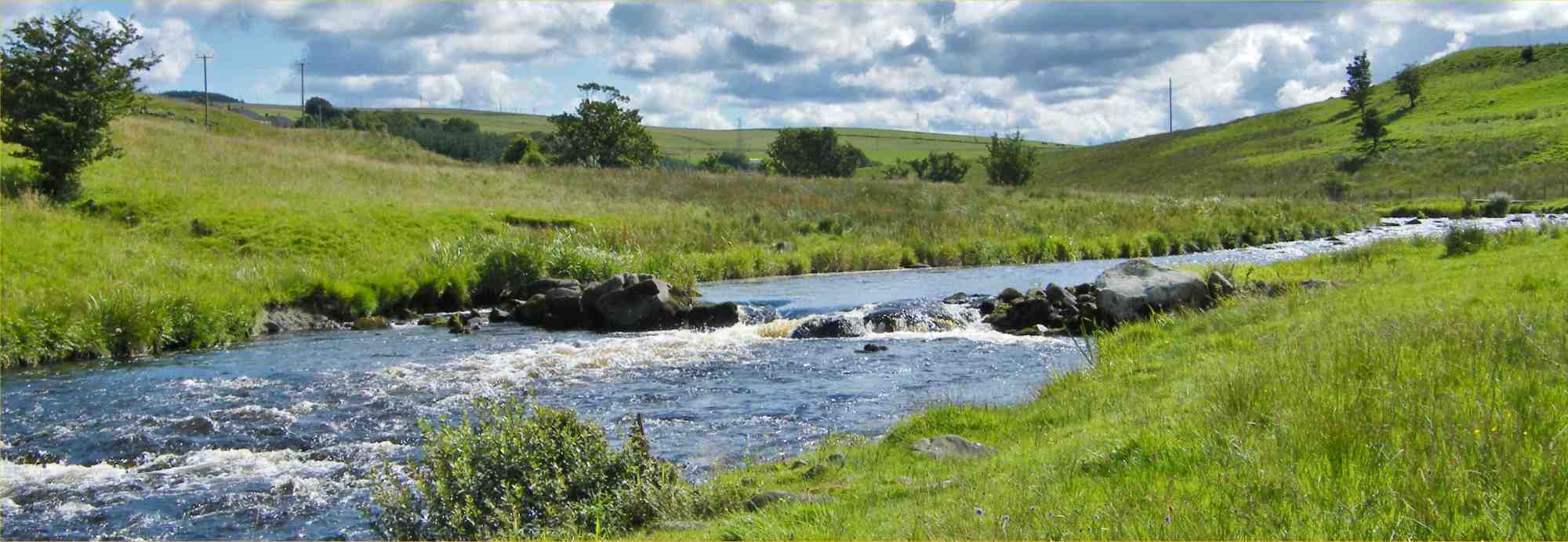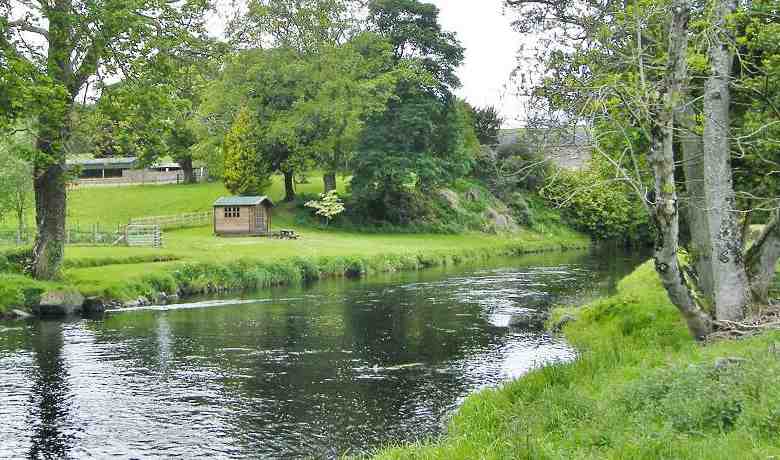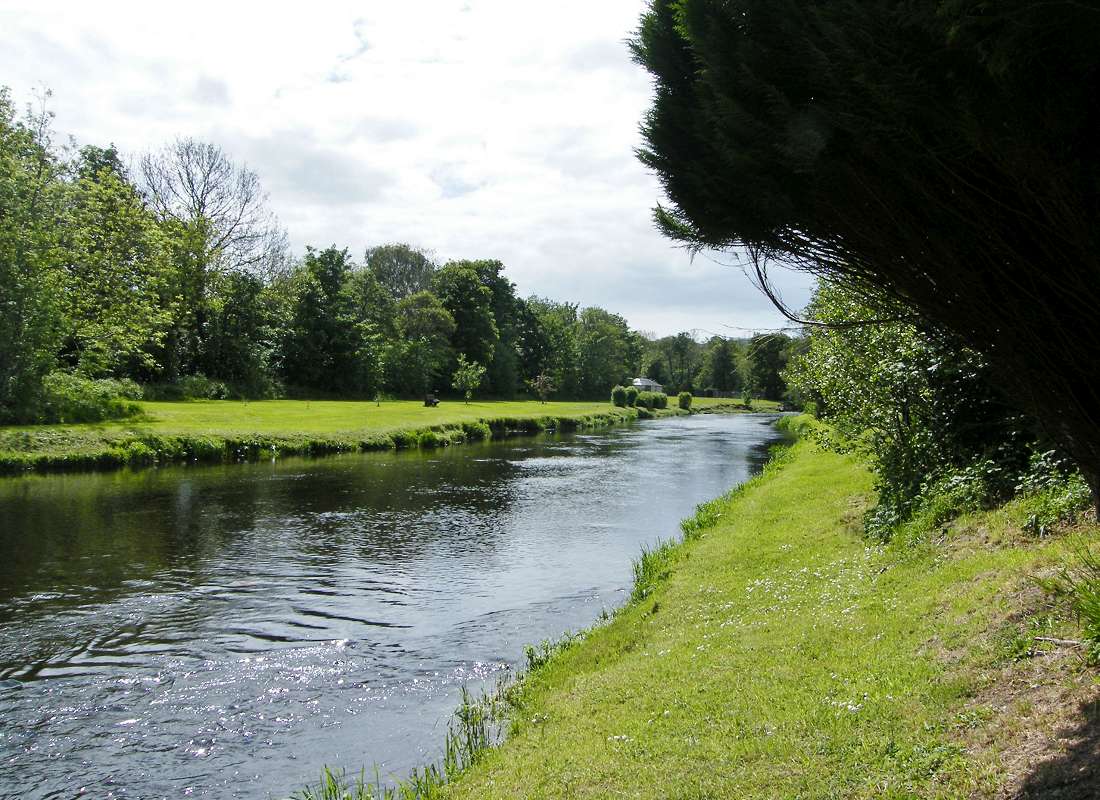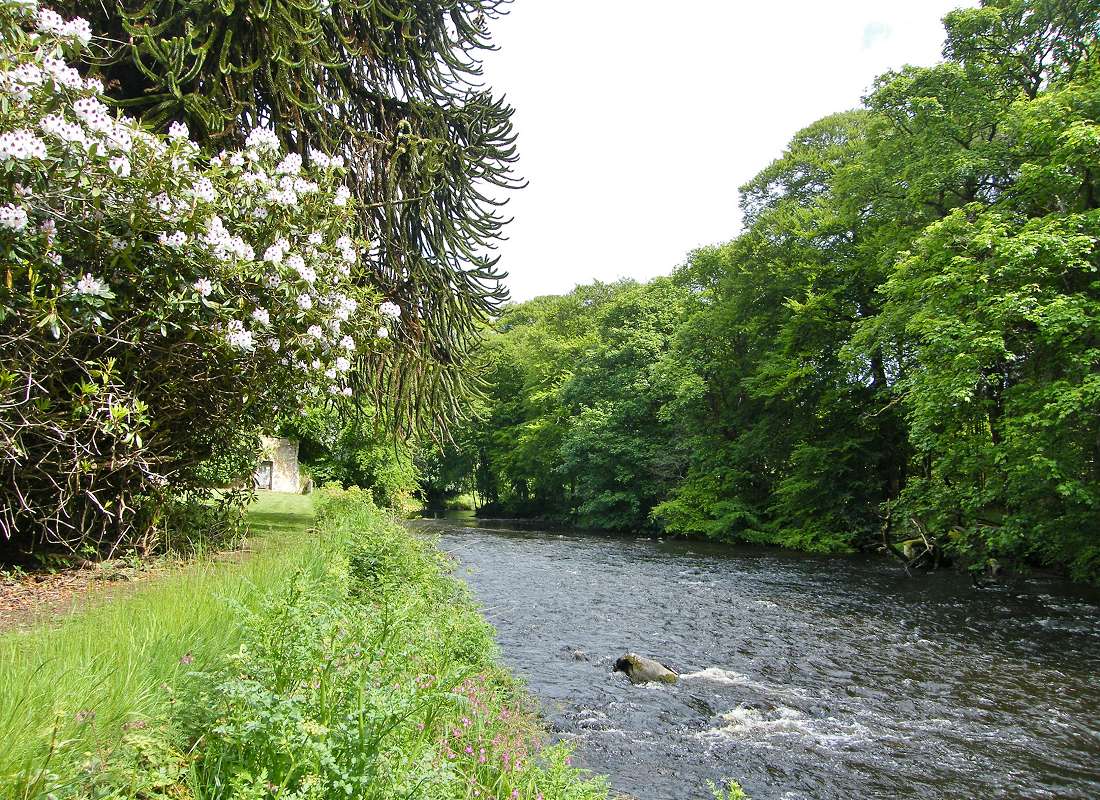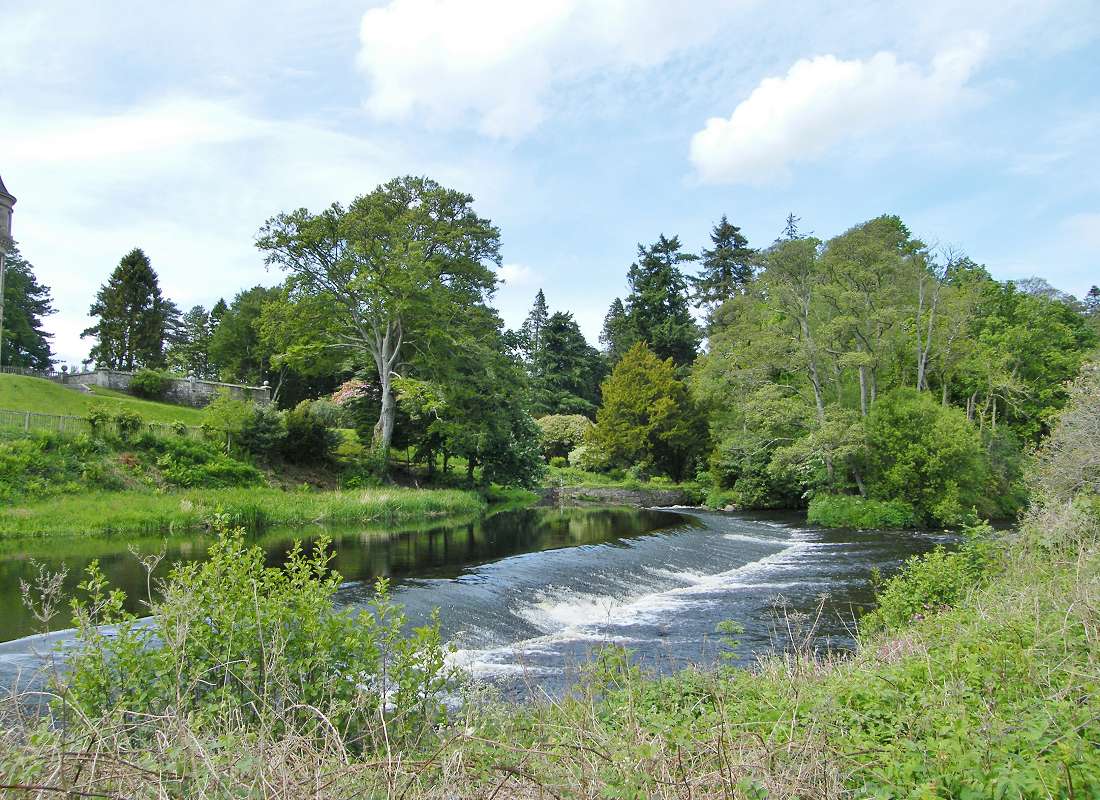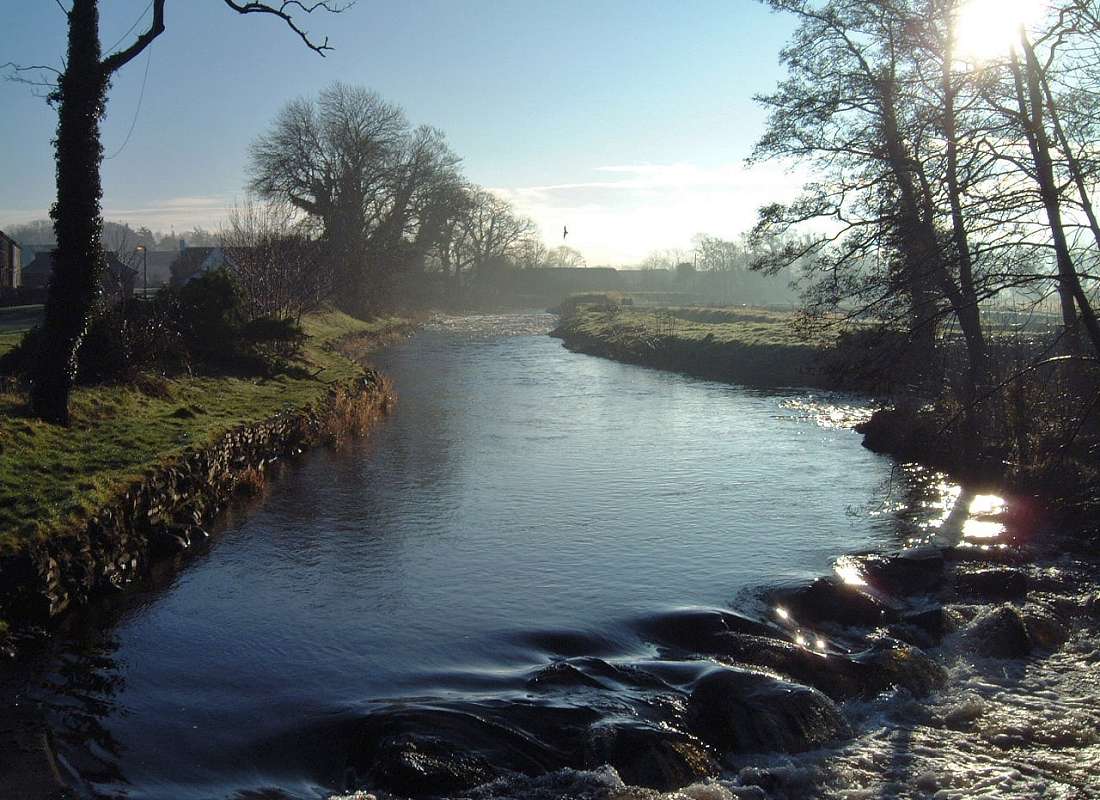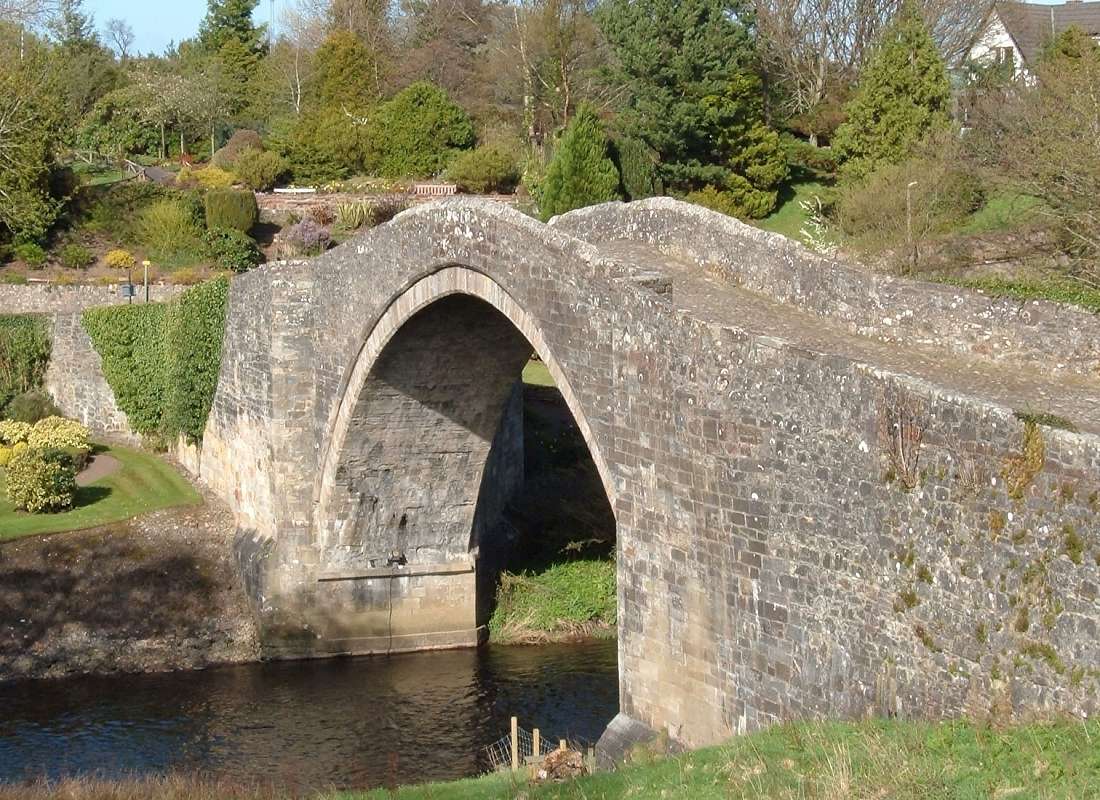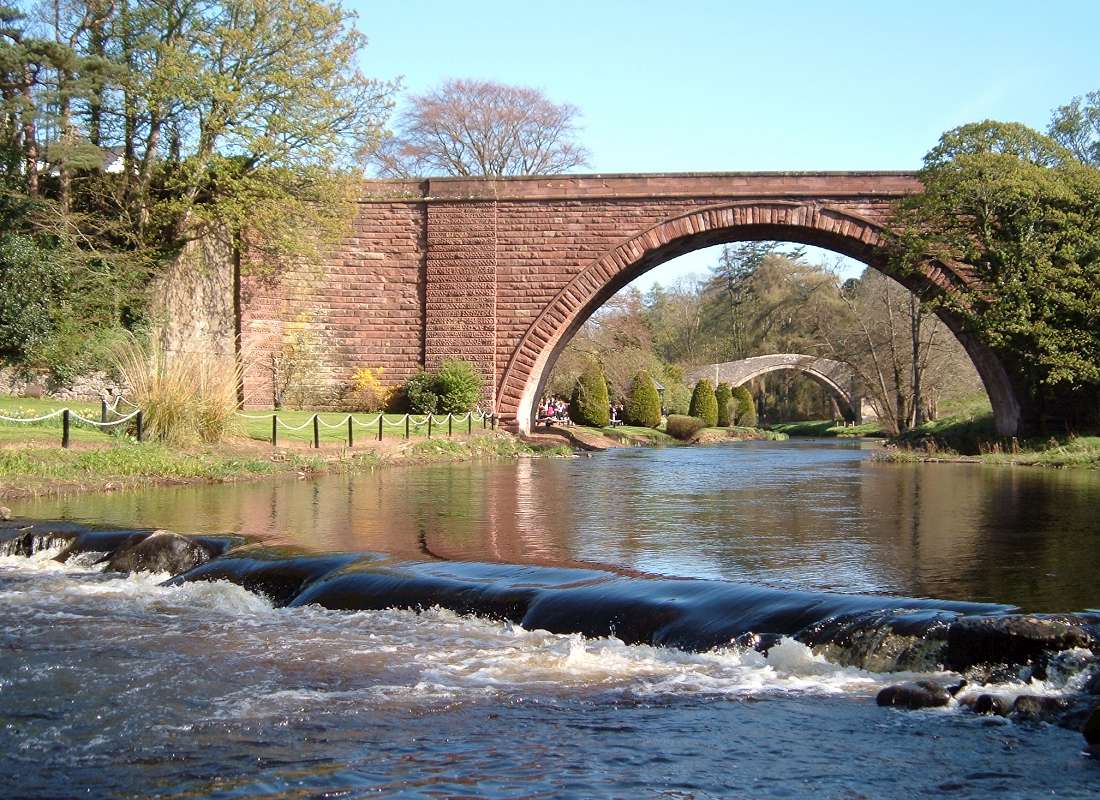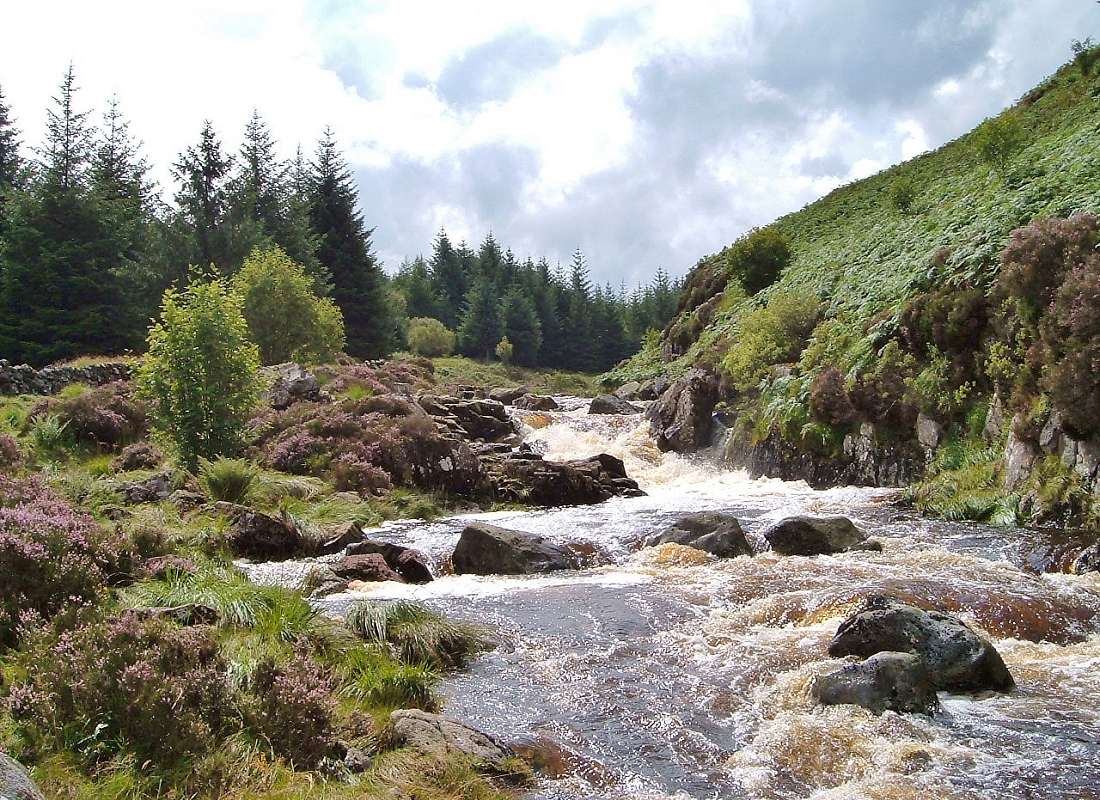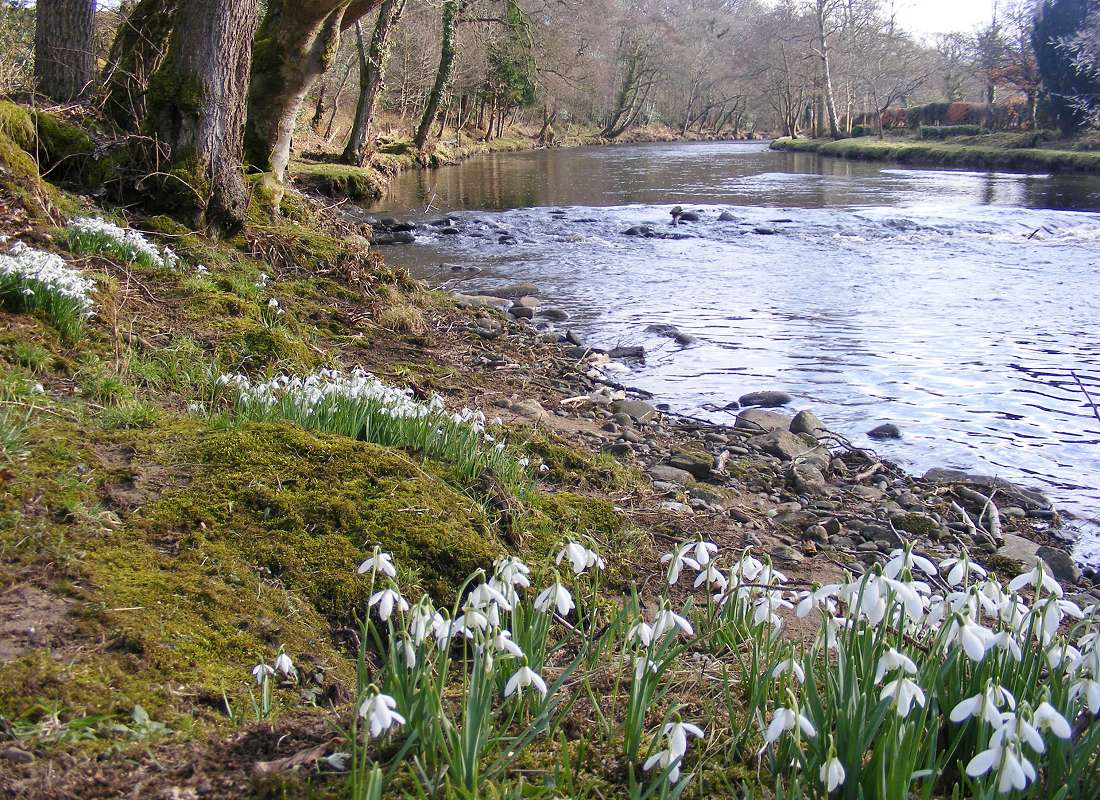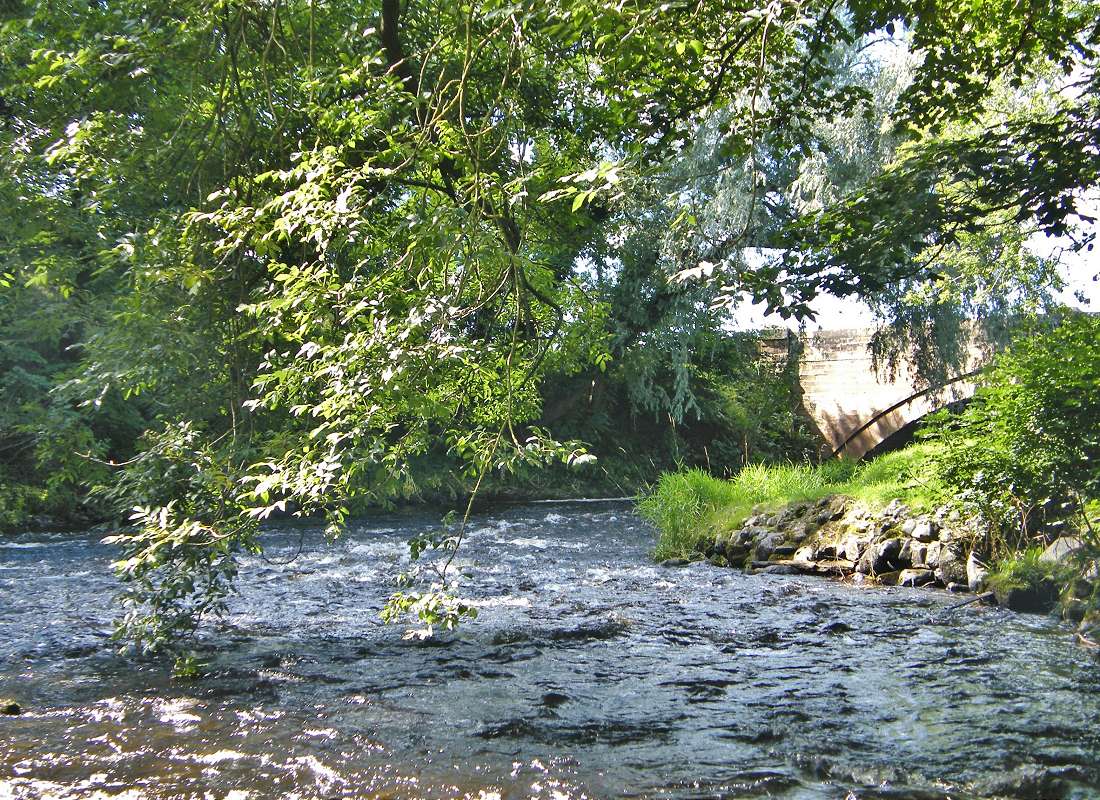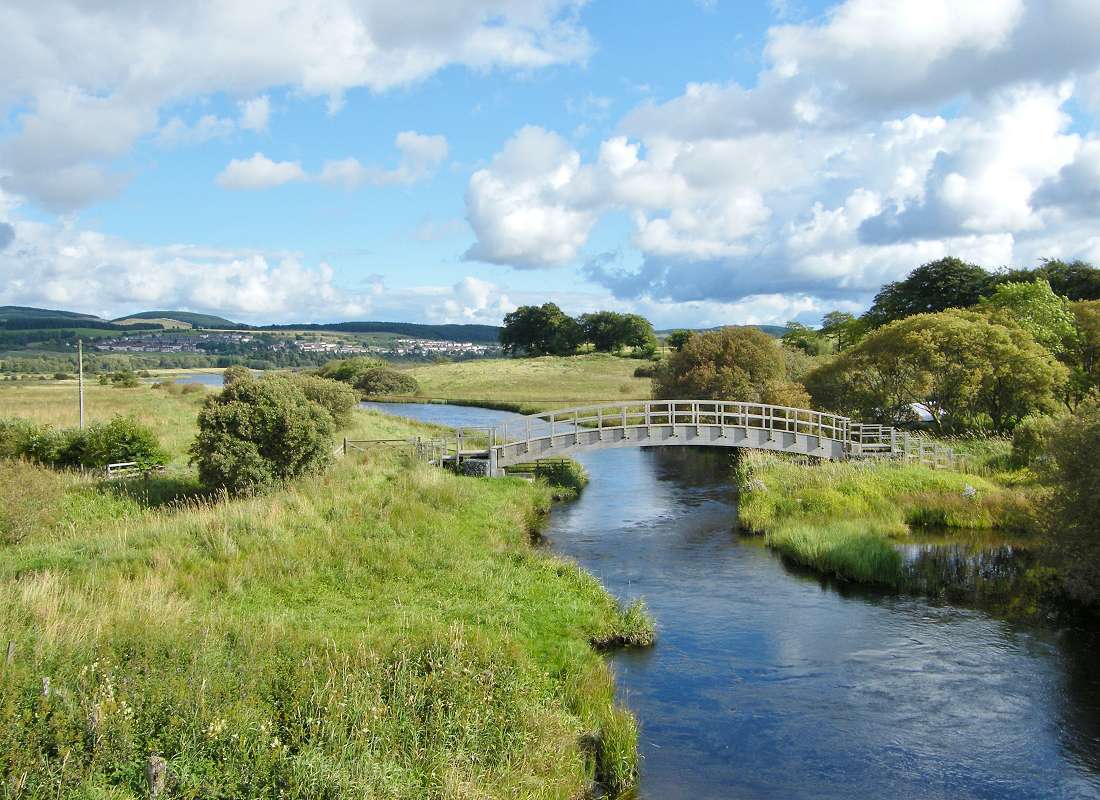The head waters of the River Doon are the burns and streams feeding Loch Doon from the north edge of the Galloway Forest Park. The river is just over 63 kilometres long (including the Loch) and flows north west close to the town of Dalmellington, through the villages of Patna and Dalrymple before entering the Firth of Clyde just south of Ayr.
The loch has been dammed to supply and store water for the Galloway Hydro-electric power. There is a net loss of water to the system although there is a compensation flow agreement which maintains water quality and flow levels throughout the year.
The river has a catchment area of 324 square kilometres. The main land uses are rough grassland, improved grassland and woodland, the majority of which consists of conifer plantations. The only significant industry is open cast coal mining in the vicinity of Dalmellington.
The geology of the Doon catchment varies from the granite headwater hills to the limestone coal measures in the middle reaches. Water chemistry mirrors the geology ranging from low productivity and intermittent acidic conditions in the upper tributaries to the highly productive, alkaline tributaries downstream of Dalmellington.
For current river levels please click here
Key Features
- The source of the Doon is Loch Enoch, high up in the Galloway Hills at an altitude of 500m.
- Loch Doon supports the only native population of Arctic Charr in the south west of Scotland. This population is considered to be under threat due to issues such as acidification, climate change and the introduction of alien species. Sentinel populations of Doon charr have been established in two other lochs in the south of Scotland to provide a pool of genetic material as insurance for the loss of the Doon population.
- The River Doon itself starts at the outlet of Loch Doon. The compensation flow of 45 million gallons/day was agreed as part of the Galloway Water Power Act in 1935.
- Below Loch Doon the river cascades down through Ness Glen, a spectacular gorge, dropping 130 feet in less than one mile.
- Although there are several small to medium sized sewage treatment works discharging into the river the relatively high flows in the Doon provide sufficient dilution to maintain water quality
- The Doon catchment is relatively narrow and there are few large tributaries below Loch Doon. The most significant of these are the Muck Water, Cummock Burn, Dunaskin Burn and Culroy Burn.
- Common fish species include salmon, brown and sea trout, arctic charr, stone loach, minnows, sticklebacks, eels, lampreys, pike and perch.
- Apart from Loch Doon there are several large stillwaters in the catchment, including Bogton Loch and Martnaham Loch. These lochs provide excellent habitat for pike and perch.
- The Doon was historically renowned for its pearl mussel fishery. There is still a remnant population present in the river although there is little evidence of recent successful spawning.
- The main stem of the Doon has an abundant population of Saucer bugs Aphelocheirus aestivalis. Saucer bugs, which require high quality water, are only found in 5 or 6 rivers in Scotland.
- There are a number of Sites of Special Scientific Interest with in the catchment e.g. Loch Doon, Ness Glen, Bogton Moss and Dalmellington Moss.

